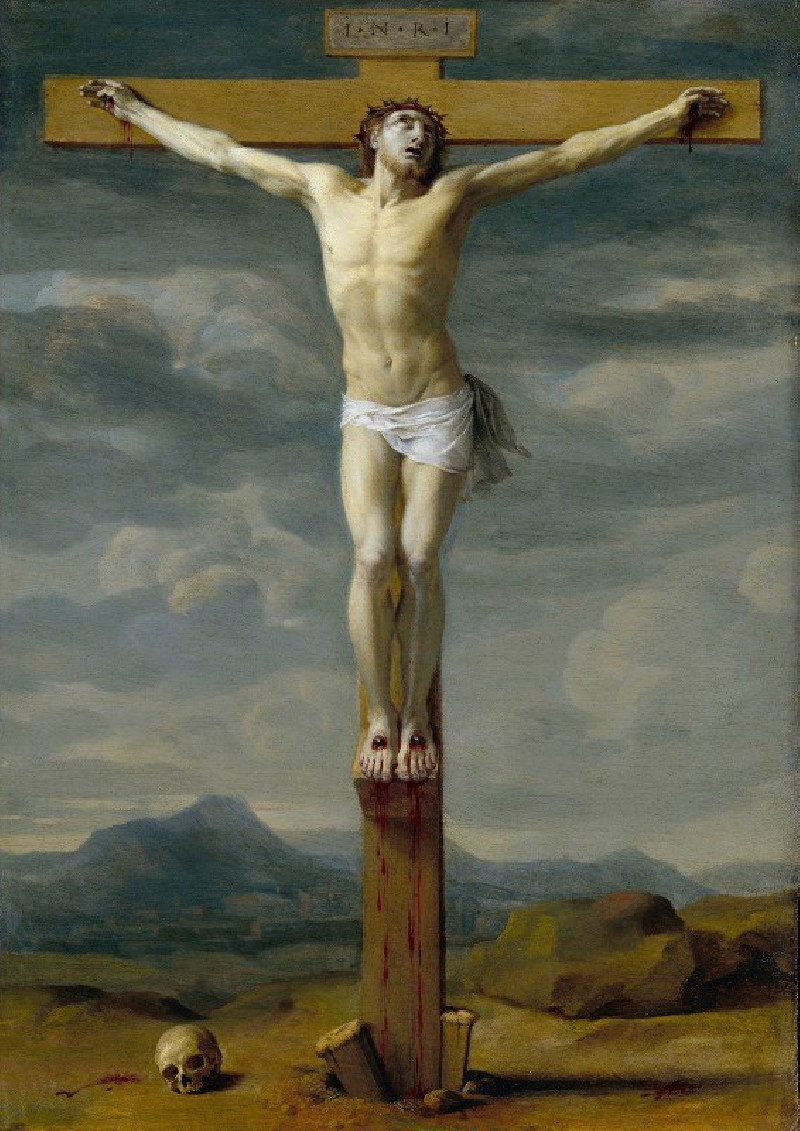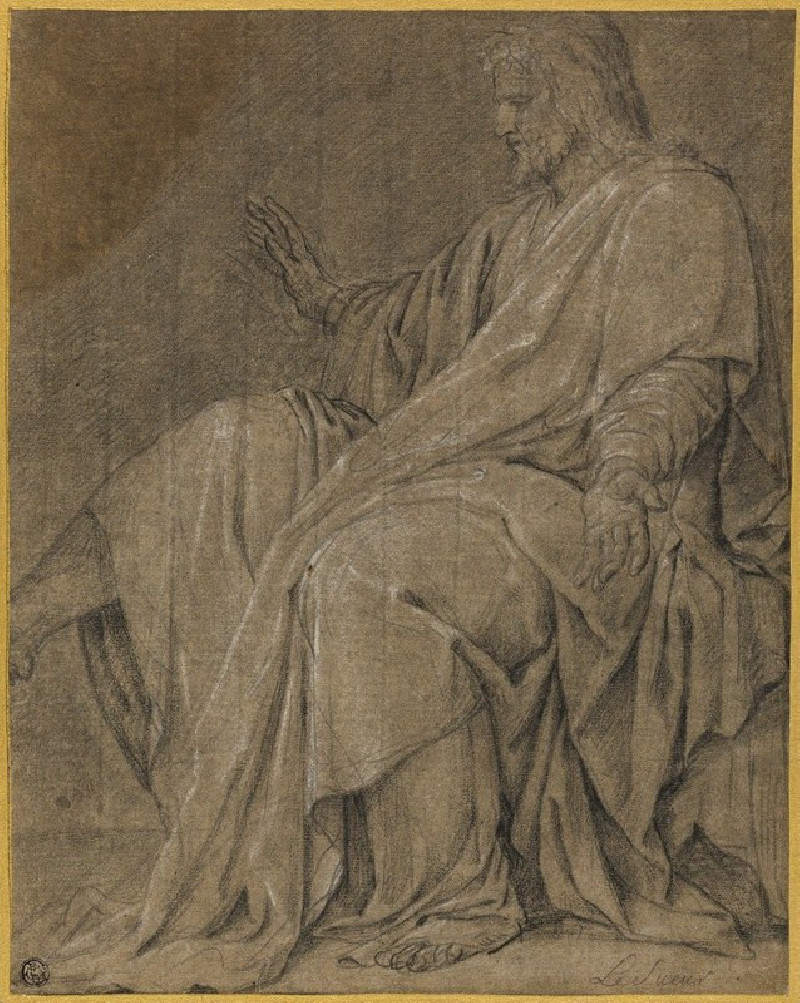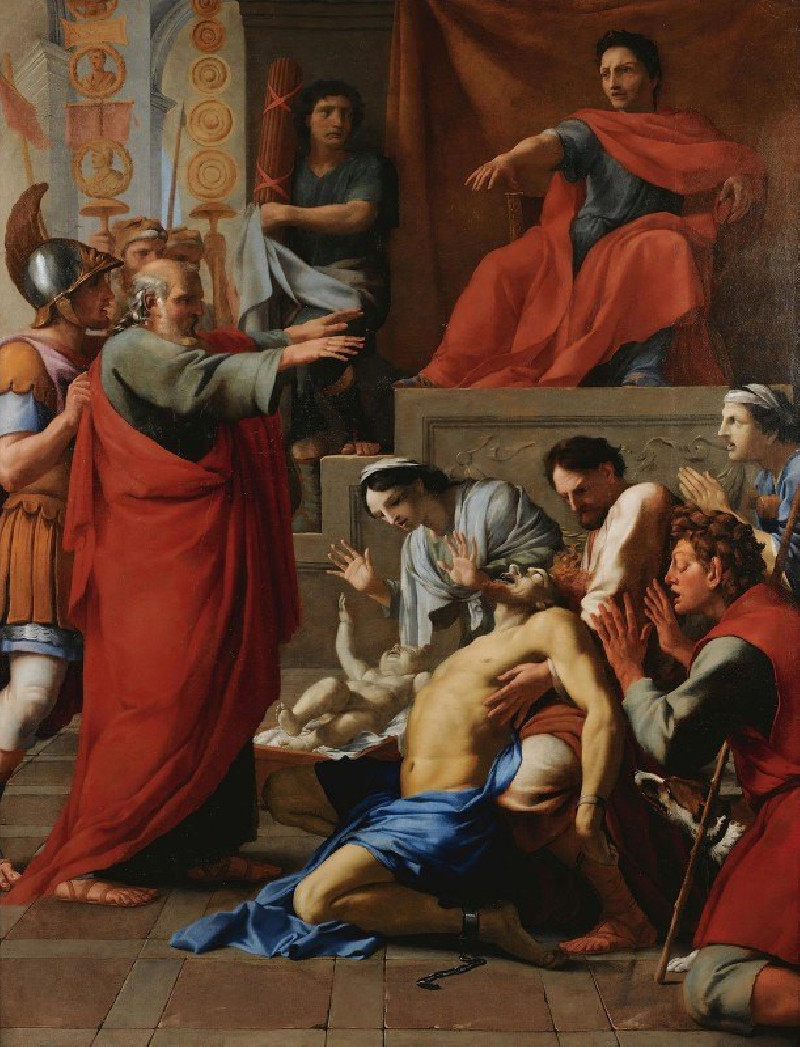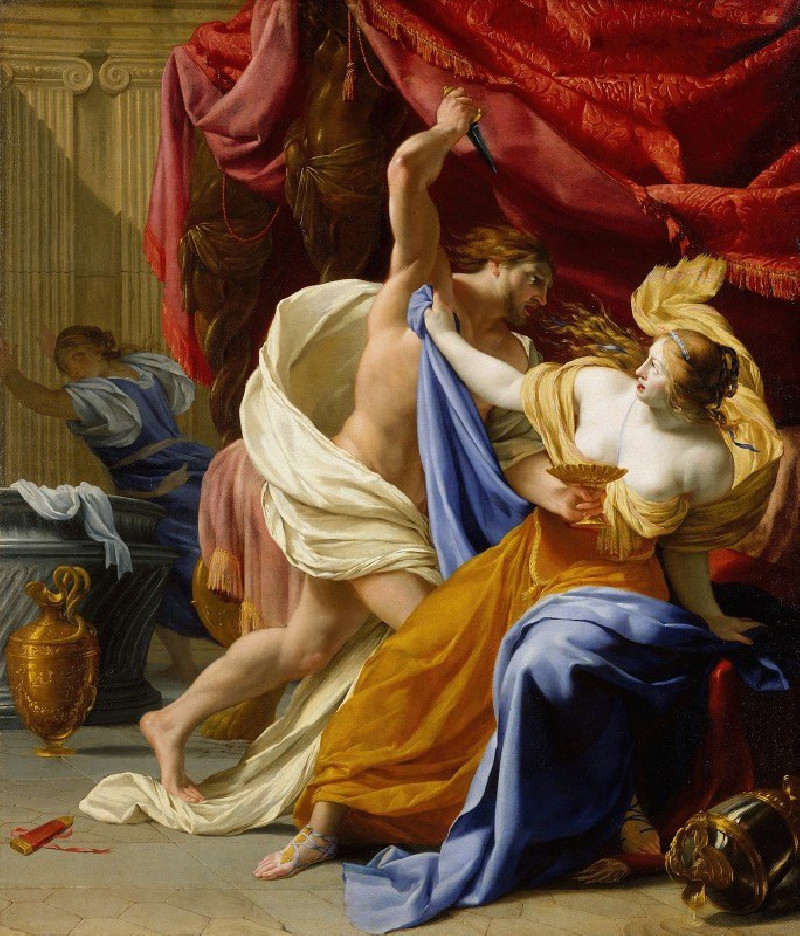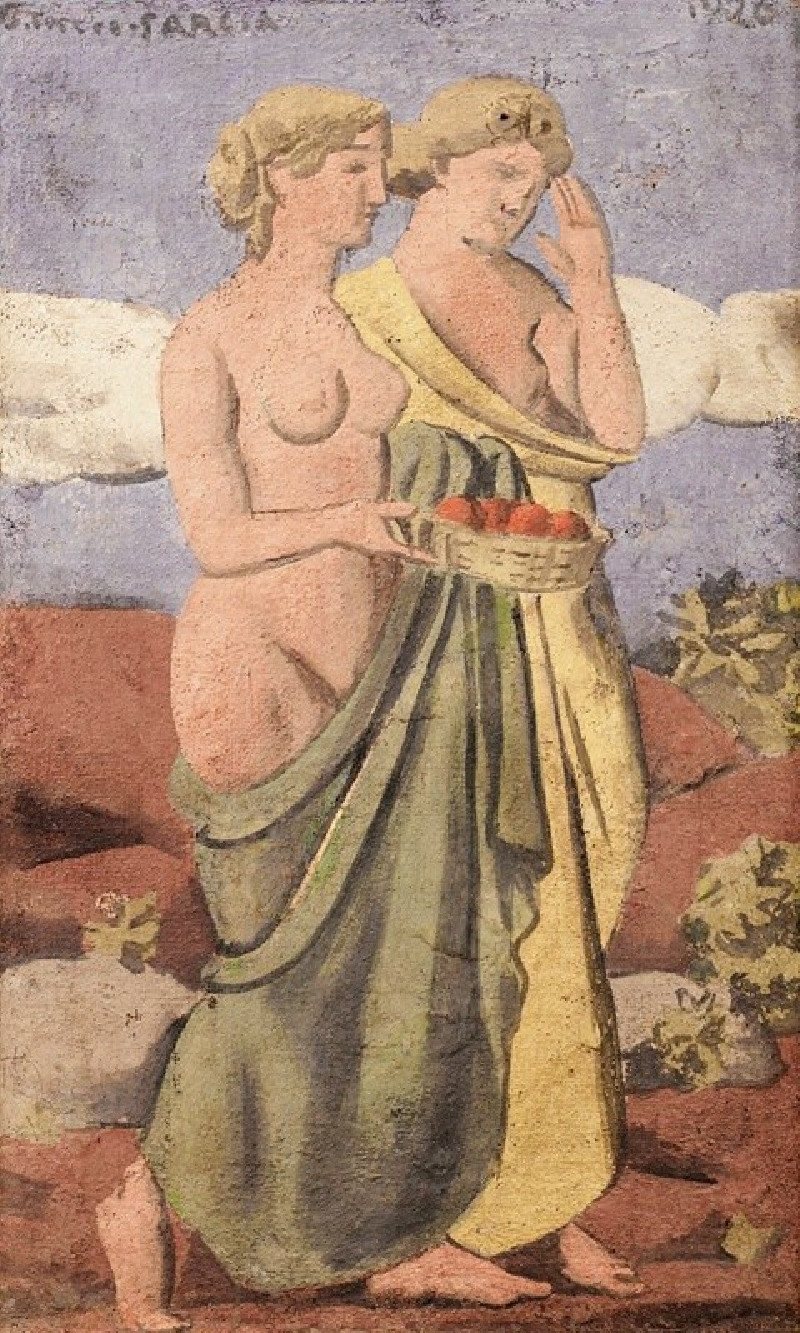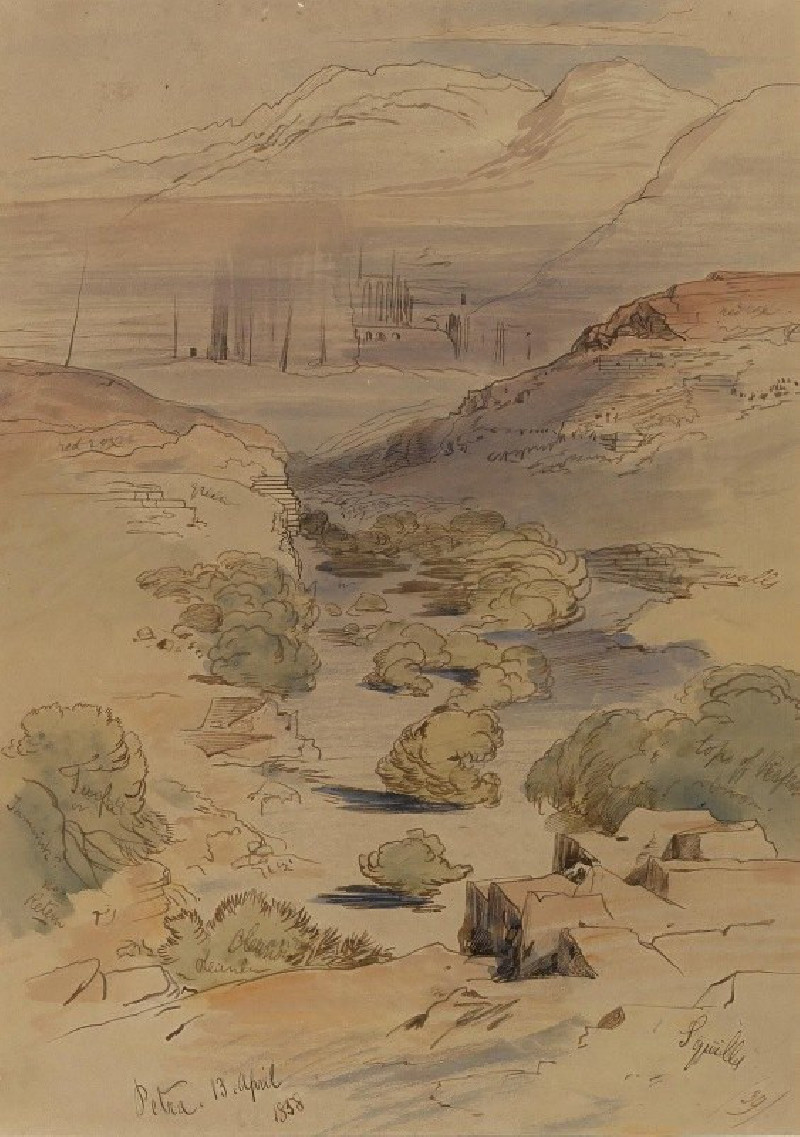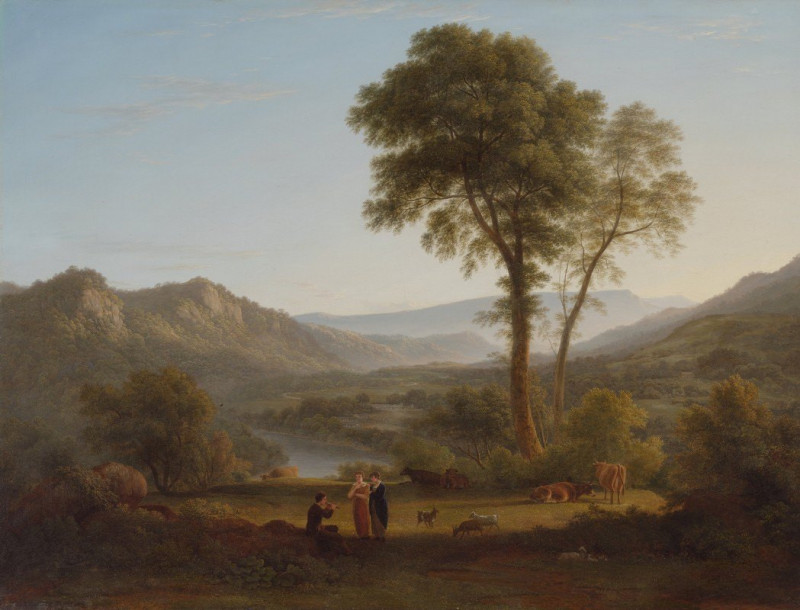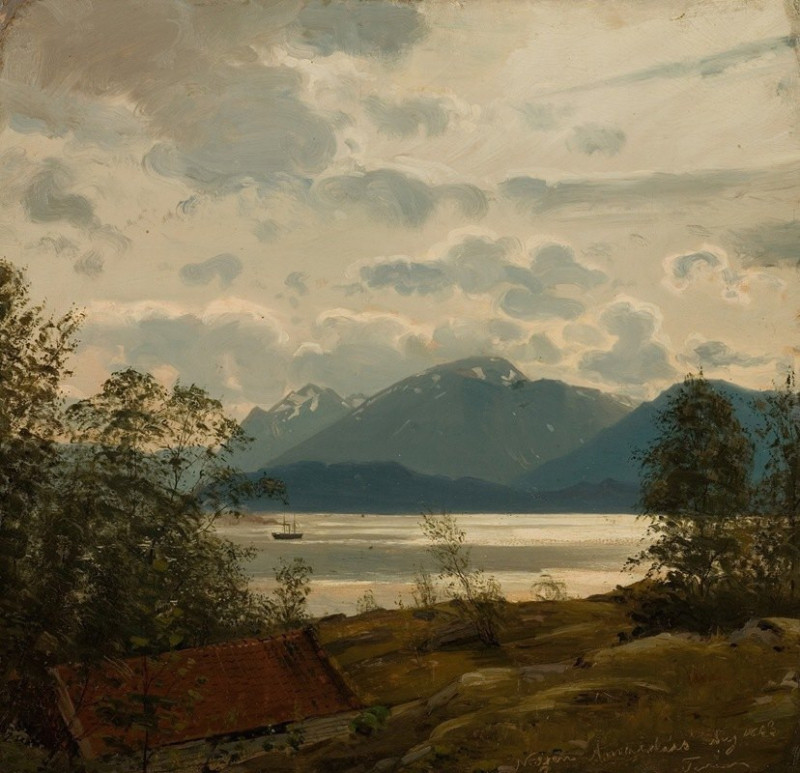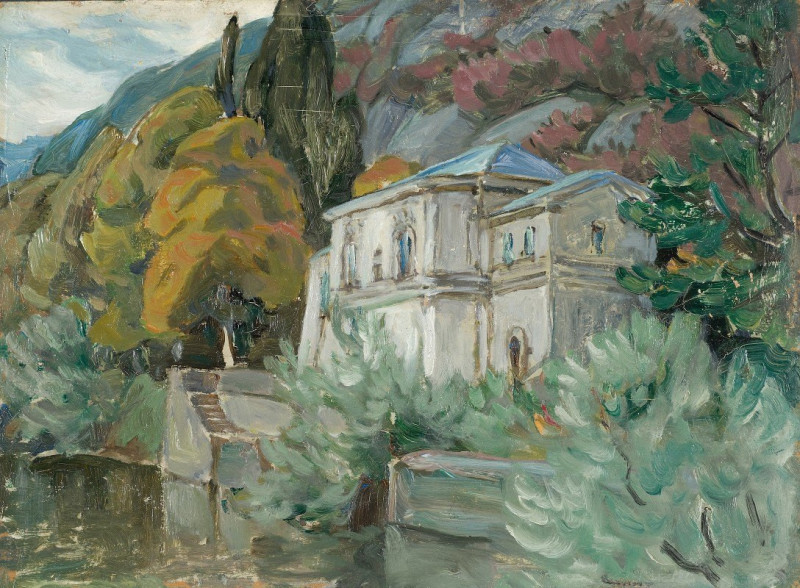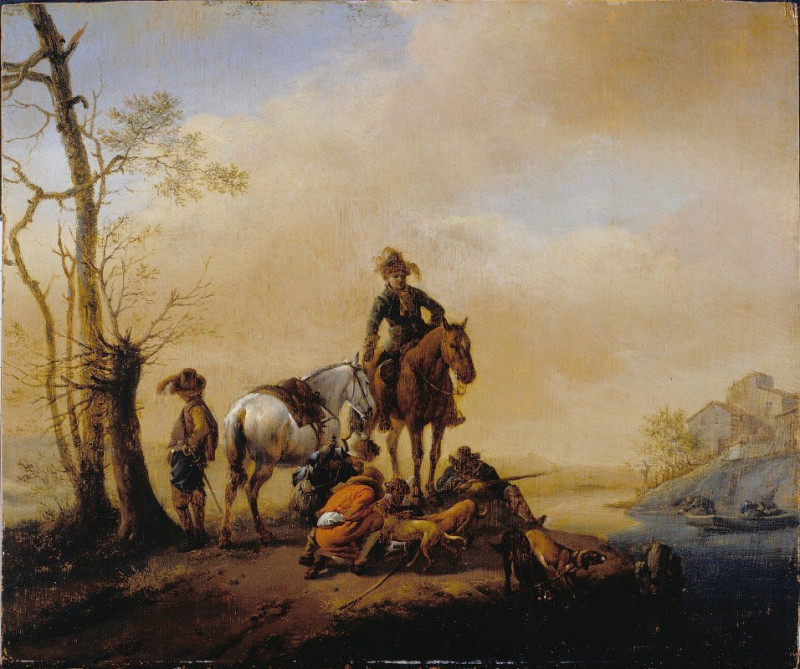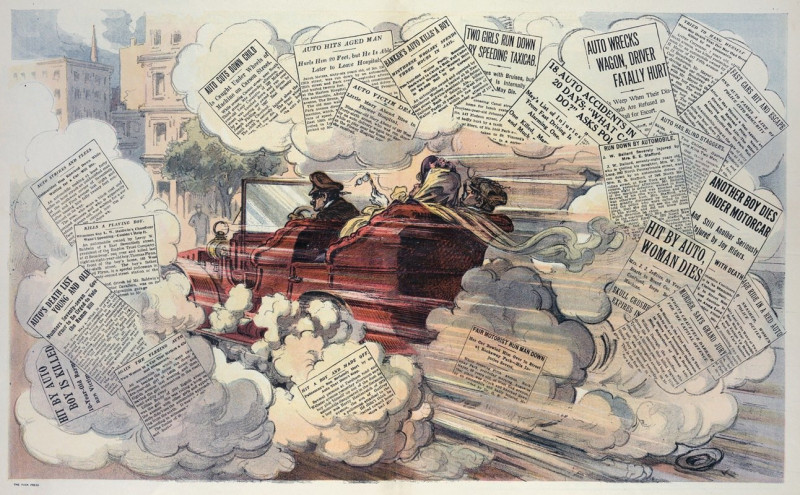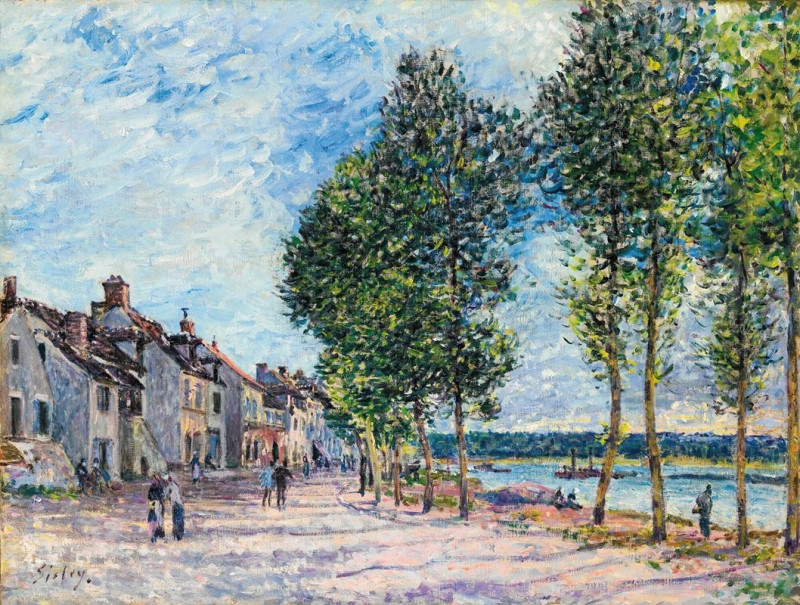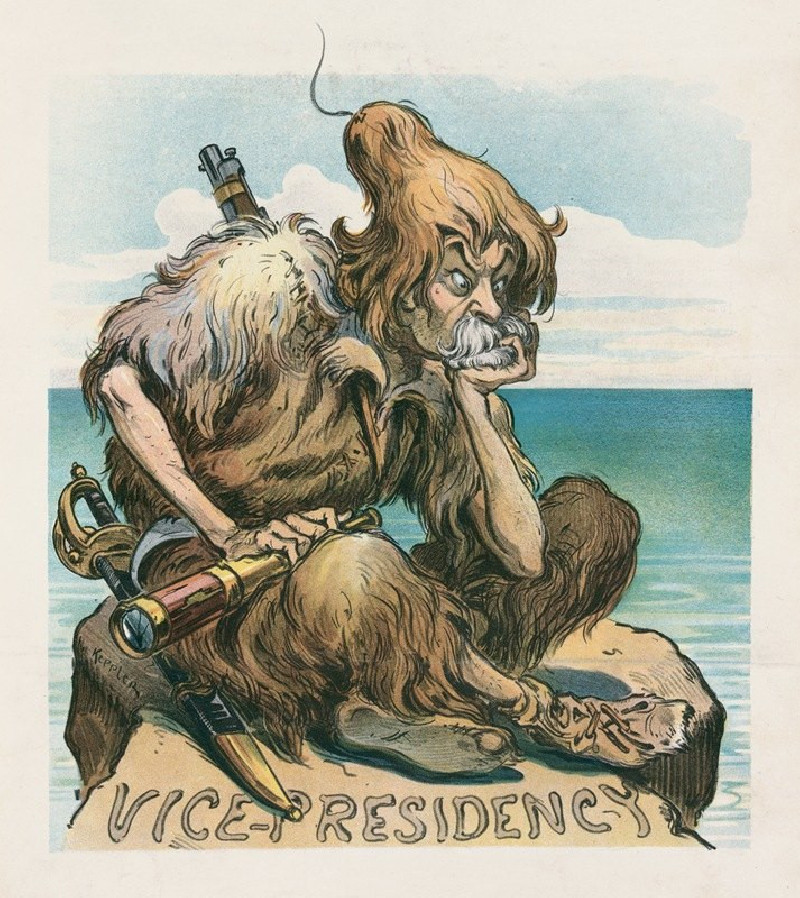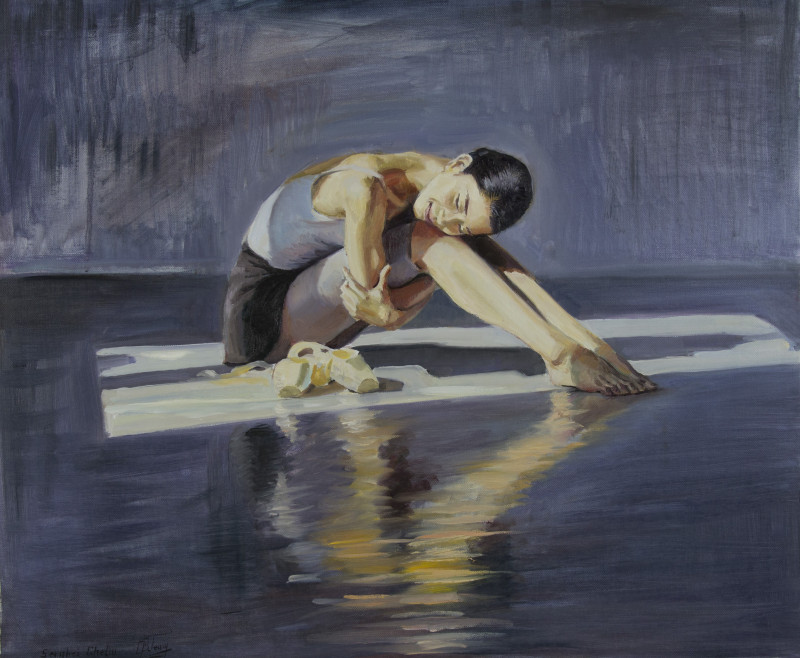Crucifixion (about 1650–1655)
Technique: Giclée quality print
Recommended by our customers
More about this artwork
Eustache Le Sueur's striking painting titled "Crucifixion," from around 1650–1655, offers a poignant depiction of one of the most iconic scenes in Christian art. The painting portrays Jesus Christ at the moment of His crucifixion, capturing a blend of solemnity and serene resignation.In Le Sueur's interpretation, Jesus is shown nailed to the cross, which is erected on a small, rocky mound. His head is bowed with a peaceful, almost contemplative expression, suggesting a moment of profound spiritual transcendence amid suffering. The pale hues of His skin are contrasted strikingly against the dark and stormy sky in the background, underlining the somber mood of the scene.The cross itself is inscribed with the letters "INRI," an abbreviation of the Latin phrase "Iesus Nazarenus Rex Iudaeorum," which translates to "Jesus the Nazarene, King of the Jews." At the foot of the cross, the haunting presence of a human skull and bones, set upon the barren ground, symbolizes Golgotha—often interpreted as the "place of the skull"—where the crucifixion took place.Eustache Le Sueur has not just created a visual representation but has invited viewers to reflect on themes of sacrifice, redemption, and the profound humanity of Jesus. The careful composition, drawn with gentle yet precise strokes, along with the soft play of light and shadow, makes this painting an evocative example of 17th-century French art, imbued with both emotional depth and spiritual intensity.

